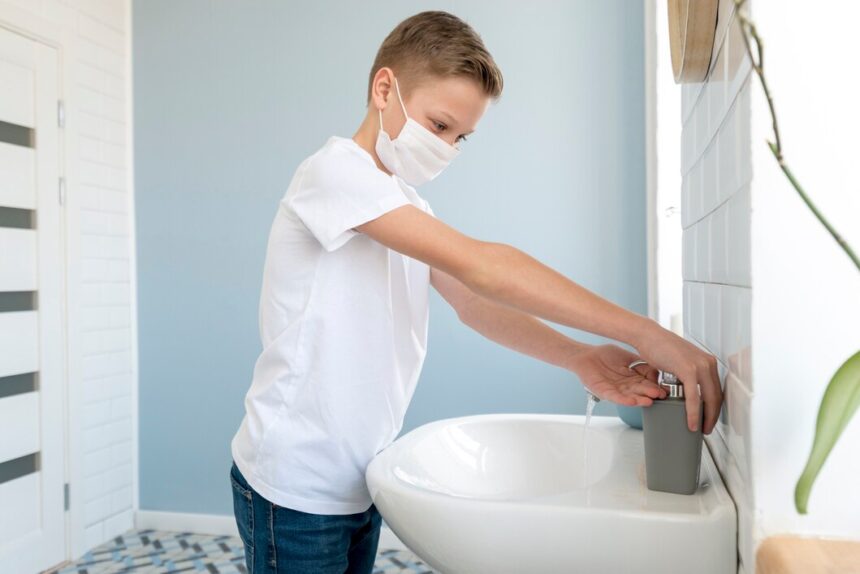Urinary tract infections (UTIs) are common among children and can lead to discomfort and potential complications if left untreated. Recognizing the early signs and symptoms is crucial for timely diagnosis and treatment. This article aims to provide an overview of the early signs and symptoms of UTIs in children, helping parents and caregivers identify the condition quickly.
What is a Urinary Tract Infection?
A urinary tract infection occurs when bacteria enter the urinary system, affecting the bladder (cystitis), kidneys (pyelonephritis), or urethra (urethritis). UTIs can occur in children of any age, but they are more prevalent in girls than boys. Symptoms may vary depending on the child’s age and whether they can effectively communicate their feelings.
Early Signs and Symptoms
- Frequent Urination: One of the first signs of a UTI in children is an increased frequency of urination. Children may feel the need to urinate more often than usual, even if only small amounts of urine are produced.
- Urgency to Urinate: Children with a UTI may experience a strong and persistent urge to urinate, often feeling that they need to go immediately.
- Burning Sensation: A burning sensation during urination (dysuria) is a common symptom of UTIs. Children may complain of pain or discomfort while urinating, which can be alarming for both the child and the parents.
- Cloudy or Foul-Smelling Urine: Urine that appears cloudy or has a strong, unpleasant odor can indicate a UTI. Changes in urine appearance may be one of the first noticeable signs for parents.
- Blood in Urine: In some cases, children may have blood in their urine (hematuria), which can make the urine appear pink or red. This symptom requires immediate medical attention.
- Abdominal or Back Pain: Children may experience pain in the lower abdomen or back. This discomfort can be generalized or localized to one side, especially if the kidneys are affected.
- Low-Grade Fever: A mild fever may accompany other UTI symptoms, indicating that the body is fighting an infection. It’s essential to monitor the child’s temperature, especially if other symptoms are present.
- Changes in Behavior: Irritability, fussiness, or lethargy can signal a UTI in younger children who may not be able to articulate their discomfort. Parents should pay attention to any unusual behavior or changes in mood.
- Incontinence or Bedwetting: Children who are previously toilet-trained may suddenly experience incontinence or bedwetting. This change can occur due to the discomfort associated with a UTI.
When to Seek Medical Attention
If a child exhibits any of the above signs and symptoms, it is essential to consult a healthcare professional promptly. Early intervention can help prevent the infection from spreading to the kidneys, leading to more severe complications. Medical attention is particularly crucial if:
- The child has a high fever (over 102°F or 38.9°C).
- Symptoms persist for more than a day or worsen over time.
- There is a presence of blood in the urine or severe abdominal/back pain.
Diagnosis and Treatment
A healthcare provider will typically perform a urine test to confirm the presence of a UTI. This may involve a urine sample to check for bacteria, white blood cells, or blood. In some cases, further testing may be necessary, especially if UTIs are recurrent.
Treatment usually involves a course of antibiotics to eliminate the infection. It is essential for parents to ensure that their child completes the entire course of prescribed antibiotics, even if symptoms improve before finishing the medication.
Prevention Tips
While not all UTIs are preventable, certain measures can help reduce the risk:
- Encourage Hydration: Ensure that children drink plenty of fluids, particularly water, to help flush bacteria from the urinary tract.
- Promote Good Hygiene: Teach children to wipe from front to back after using the toilet to prevent bacteria from entering the urethra.
- Regular Bathroom Breaks: Encourage regular bathroom breaks to avoid prolonged holding of urine, which can contribute to infections.
- Wear Cotton Underwear: Cotton underwear is breathable and can help reduce moisture, creating a less favorable environment for bacterial growth.
Early recognition of the signs and symptoms of urinary tract infections in children is crucial for effective treatment and prevention of complications. Parents and caregivers should remain vigilant and seek medical attention when necessary to ensure their child’s health and well-being. By fostering good hygiene practices and encouraging proper hydration, families can take proactive steps to reduce the risk of UTIs and promote overall urinary health.










